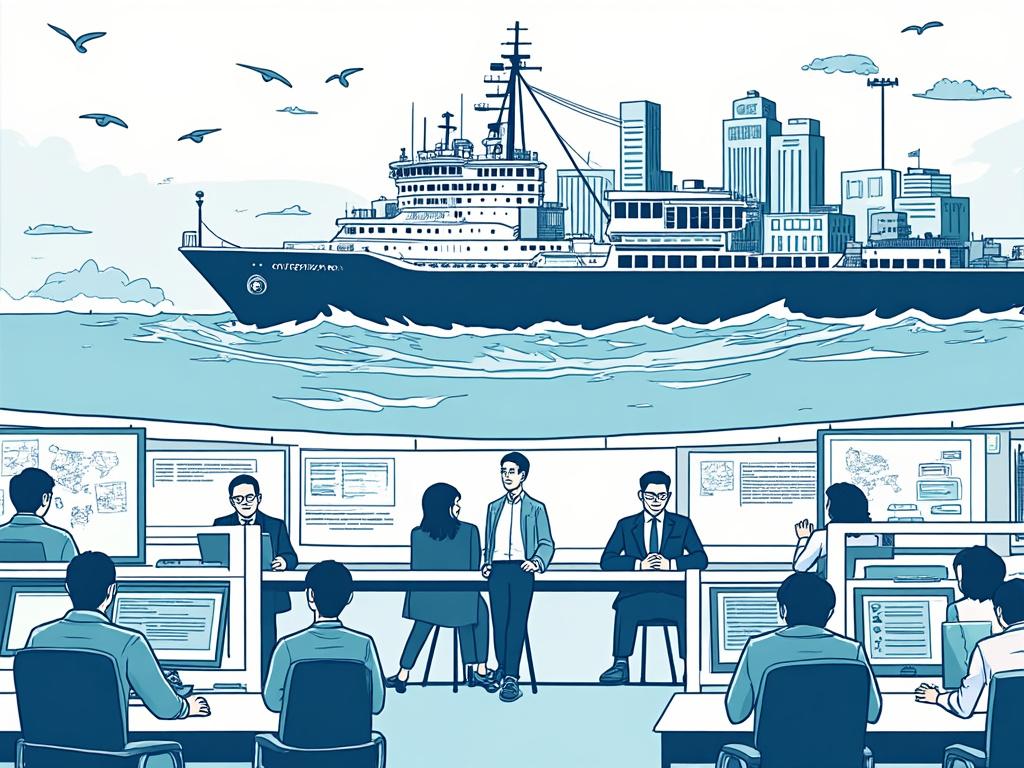
Marine Conservation Efforts in Greece: Protecting the Mediterranean’s Hidden Treasures
Reading time: 12 minutes
Table of Contents
- Current State of Greek Marine Ecosystems
- Major Conservation Programs and Initiatives
- Marine Protected Areas: Success Stories
- Species-Specific Protection Efforts
- Key Challenges and Solutions
- Community and Tourism Impact
- Charting a Sustainable Course Forward
- Frequently Asked Questions
Ever wondered how a country with over 13,000 kilometers of coastline manages to protect its marine biodiversity while welcoming millions of tourists annually? Greece faces this exact challenge, and the solutions being implemented offer fascinating insights into modern marine conservation.
The Mediterranean Sea surrounding Greece hosts approximately 17,000 marine species, with many found nowhere else on Earth. Yet this biodiversity paradise faces mounting pressures from climate change, overfishing, and coastal development. Here’s the encouraging news: Greece has emerged as a leader in innovative marine conservation, combining cutting-edge science with community-driven initiatives.
Current State of Greek Marine Ecosystems
Let’s start with the reality check. Greece’s marine environment tells a story of both resilience and vulnerability. The Aegean and Ionian Seas contain some of the Mediterranean’s most pristine underwater landscapes, yet face significant challenges.
Biodiversity Assessment: The Numbers Tell a Story
Recent surveys by the Hellenic Centre for Marine Research reveal striking statistics:
- 2,300+ fish species documented in Greek waters
- 400+ endemic species found exclusively in the Eastern Mediterranean
- 15 marine mammal species regularly observed, including the critically endangered Mediterranean monk seal
- Over 200 coral and sponge species creating unique underwater ecosystems
Marine Ecosystem Health Comparison
75% Healthy
60% Stable
45% Sustainable
82% Excellent
Emerging Threats and Environmental Pressures
Climate change impacts are becoming increasingly visible. Water temperatures have risen by 1.2°C over the past three decades, affecting species distribution and breeding patterns. Marine biologist Dr. Maria Salomidi from the Institute of Marine Biology notes: “We’re witnessing northward migration of warm-water species and stress responses in traditional Mediterranean species that have adapted to cooler conditions over millennia.”
Plastic pollution presents another critical challenge. Greece generates approximately 700,000 tons of marine plastic waste annually, with microplastics now detected in 90% of fish samples from popular fishing areas.
Major Conservation Programs and Initiatives
Greece’s approach to marine conservation combines EU directives with locally-developed strategies. The results? Some of the Mediterranean’s most successful conservation outcomes.
The National Marine Strategy Framework
Launched in 2018, this comprehensive program targets specific conservation goals:
| Conservation Target | Current Status | 2030 Goal | Key Indicators |
|---|---|---|---|
| Marine Protected Areas | 6.2% of territorial waters | 15% coverage | Habitat diversity, species recovery |
| Fish Stock Recovery | 45% sustainable levels | 70% sustainable levels | Biomass indices, catch quotas |
| Plastic Pollution Reduction | 30% reduction achieved | 65% reduction target | Beach litter monitoring, microplastic levels |
| Coastal Habitat Restoration | 1,200 hectares restored | 3,500 hectares target | Seagrass coverage, dune stabilization |
LIFE+ Projects: EU-Funded Conservation Success
The LIFE-Nature projects have invested over €45 million in Greek marine conservation since 2015. One standout example is the LIFE-Nature project in the Northern Sporades, which has achieved remarkable results in monk seal protection.
Quick Scenario: Imagine you’re a Mediterranean monk seal—one of only 700 remaining worldwide. Your survival depends on finding safe caves for pupping and abundant fish populations. The Northern Sporades project created exactly these conditions, resulting in a 23% population increase over five years.
Marine Protected Areas: Success Stories
National Marine Park of Zakynthos: A Model for Turtle Conservation
Established in 1999, this park protects the largest nesting site for loggerhead sea turtles in the Mediterranean. The numbers speak volumes:
- 1,500+ nests recorded annually (up from 800 in 2000)
- 85% hatching success rate (compared to 60% in unprotected areas)
- Zero tourism-related turtle deaths since 2015 (previously 15-20 annually)
The secret? A carefully balanced approach combining strict protection zones with sustainable tourism. Park manager Dimitris Margaritoulis explains: “We learned that excluding tourism entirely wasn’t realistic. Instead, we created win-win solutions where tourists become active participants in conservation.”
Karaburun-Sazan Marine Park: Transboundary Cooperation
This innovative cross-border initiative between Greece and Albania demonstrates how marine conservation transcends political boundaries. The park protects critical spawning grounds for bluefin tuna and provides refuge for dolphins and whales.
Since its establishment, the park has documented:
- 40% increase in large pelagic fish populations
- Recovery of commercial fish stocks in adjacent areas
- Thriving underwater meadows of Posidonia oceanica seagrass
Species-Specific Protection Efforts
Mediterranean Monk Seal: From Near Extinction to Hope
Perhaps no species better illustrates Greece’s conservation success than the Mediterranean monk seal. Once numbering in thousands, the population crashed to fewer than 20 individuals in Greek waters by 1990.
Today’s recovery story involves:
- Cave protection programs securing critical breeding sites
- Fishermen collaboration initiatives reducing accidental catches
- Real-time monitoring systems tracking individual seals
- Public awareness campaigns building local support
The result? The current population has grown to approximately 350-400 individuals, with successful breeding documented at multiple sites. This represents the largest viable Mediterranean monk seal population in the world.
Sea Turtle Conservation: Integrated Coastal Management
Greece hosts nesting sites for both loggerhead and green sea turtles. Conservation efforts focus on:
Practical Protection Measures:
- LED lighting regulations reducing disorientation of hatchlings
- Beach furniture removal during nesting season
- Speed boat restrictions in nearshore waters
- Nest monitoring and protection protocols
These measures have yielded impressive results: 92% nest success rate in protected areas versus 65% in unprotected zones.
Key Challenges and Solutions
Challenge 1: Balancing Tourism and Conservation
Greece welcomes over 30 million tourists annually, many drawn to coastal areas that overlap with critical marine habitats.
Innovative Solutions:
- Seasonal zoning: Areas closed during breeding seasons, open for low-impact tourism otherwise
- Eco-certification programs: Hotels and tour operators meeting conservation standards receive recognition
- Tourist education: Visitors become conservation ambassadors through guided experiences
One inspiring example comes from properties in peloponnese, where luxury developments integrate marine conservation features like artificial reefs and seagrass restoration areas.
Challenge 2: Climate Change Adaptation
Rising temperatures and sea levels require adaptive management strategies:
Adaptation Measures:
- Assisted migration programs for temperature-sensitive species
- Coral gardening projects using heat-resistant varieties
- Blue carbon initiatives protecting and restoring seagrass meadows
- Early warning systems for marine heatwave events
Challenge 3: Sustainable Fisheries Management
Overfishing remains a persistent threat, but collaborative approaches show promise:
- Fisher-scientist partnerships improve stock assessments
- Alternative livelihood programs support fishing communities
- Market-based incentives reward sustainable practices
- Technology adoption reduces bycatch through gear modifications
Community and Tourism Impact
Local Communities as Conservation Partners
Successful marine conservation in Greece relies heavily on community engagement. The island of Gyaros provides a compelling case study where local communities transformed from skeptics to conservation champions.
When the government proposed establishing a marine protected area around Gyaros in 2019, initial resistance was strong. Fishermen worried about access restrictions, while tourism operators feared lost revenue. However, a comprehensive engagement process changed perspectives:
- Community workshops explained conservation benefits and economic opportunities
- Pilot projects demonstrated sustainable fishing and tourism practices
- Benefit-sharing agreements ensured local communities received conservation revenues
- Training programs developed local expertise in eco-tourism and monitoring
Today, Gyaros boasts a 78% community support rate for conservation measures, with local income from eco-tourism increasing by 340% since 2020.
Sustainable Tourism Models
Greece has pioneered several innovative approaches to marine eco-tourism:
The “Blue Flag Plus” Program: Goes beyond traditional Blue Flag criteria to include marine conservation requirements. Beaches must demonstrate active participation in species protection, habitat restoration, or research support.
Citizen Science Tourism: Visitors participate in data collection for marine research projects. Programs like “Dive for Science” have engaged over 15,000 tourist-divers in underwater surveys, contributing valuable data while creating memorable experiences.
Charting a Sustainable Course Forward
Greece’s marine conservation journey offers valuable lessons for coastal nations worldwide. The integration of scientific research, community engagement, and economic incentives creates a framework that other Mediterranean countries are beginning to adopt.
Your Conservation Action Plan:
- Support certified eco-tourism operators when visiting Greek coastal areas—look for Blue Flag Plus certification and community-based programs
- Participate in citizen science projects during your travels—many require no special skills, just enthusiasm and basic swimming ability
- Choose sustainable seafood options when dining—ask restaurants about locally-sourced, sustainably-caught fish
- Reduce plastic consumption during coastal visits—bring reusable water bottles and bags, participate in beach cleanups
- Share conservation stories on social media—raising awareness multiplies impact beyond your personal actions
The Mediterranean’s future depends on scaling successful conservation models like those pioneered in Greece. Climate change won’t wait for perfect solutions, but the tools and knowledge exist to make meaningful progress.
As marine ecosystems face unprecedented pressures, Greece’s holistic approach—combining rigorous science with community partnership and economic sustainability—offers a blueprint for hope. The question isn’t whether we can afford to protect our marine heritage, but whether we can afford not to.
What role will you play in supporting marine conservation efforts during your next coastal adventure?
Frequently Asked Questions
How can tourists contribute to marine conservation while visiting Greece?
Tourists can make a significant impact through several practical actions: choose accommodations with eco-certifications, participate in organized beach cleanups, support local eco-tourism operators that contribute to conservation funding, follow marine park guidelines strictly (especially regarding wildlife viewing distances), and consider joining citizen science projects like underwater surveys or turtle monitoring programs. Many coastal areas offer guided conservation experiences where tourism fees directly support protection efforts.
What makes Greece’s marine protected areas different from other Mediterranean countries?
Greece’s approach emphasizes community-based management and integrated coastal planning rather than top-down protection models. The country pioneered collaborative frameworks where local fishing communities, tourism operators, and scientists work together to develop conservation strategies. Additionally, Greece has successfully implemented seasonal zoning systems that balance ecological needs with economic activities, and has invested heavily in long-term monitoring programs that provide data for adaptive management decisions.
Are Greece’s marine conservation efforts showing measurable success?
Yes, several key indicators demonstrate clear progress: Mediterranean monk seal populations have increased from fewer than 20 individuals in 1990 to 350-400 today; sea turtle nesting success rates reach 92% in protected areas compared to 65% in unprotected zones; plastic pollution has decreased by 30% in monitored areas since 2018; and fish biomass in marine protected areas shows 40-60% higher levels compared to adjacent unprotected waters. These improvements result from sustained effort over multiple decades rather than short-term interventions.

Article reviewed by Dominic Rossi, Historic Real Estate Specialist | Renaissance Palaces to Modern ROI, on June 6, 2025
